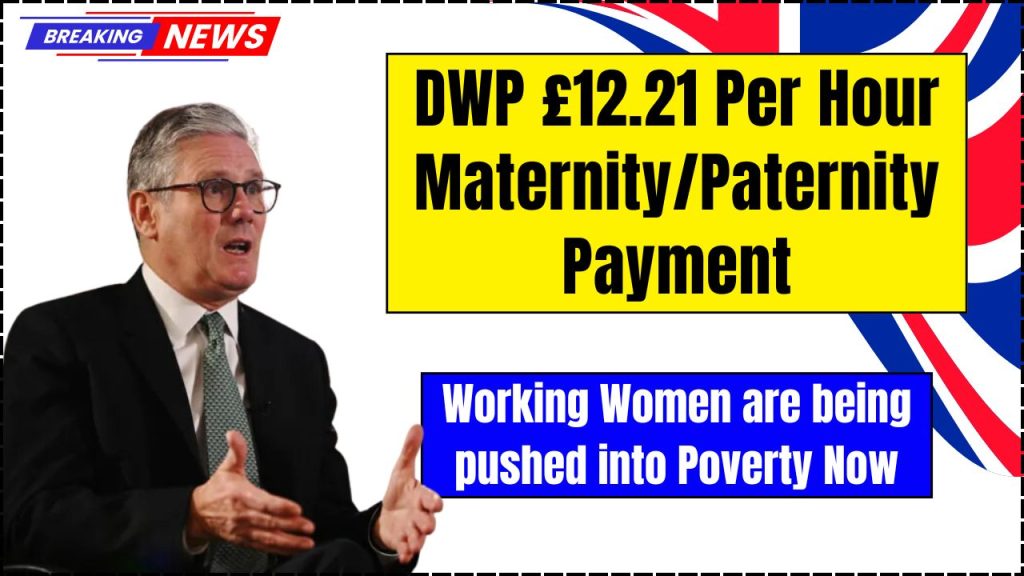
The gap between the UK’s National Living Wage and statutory parental payments has reached a concerning level, raising questions about financial support for new parents. As the cost of living continues to rise, many families face difficult choices during what should be a celebratory time in their lives.
Understanding the Current Payment Structure
In April 2024, the UK government increased the National Living Wage to £12.21 per hour for workers aged 21 and over. This rate was established as the minimum needed to maintain a basic standard of living. However, when examining Statutory Maternity Pay (SMP) and Statutory Paternity Pay (SPP), there’s a significant disparity that affects thousands of new parents each year.
Comparison of Hourly Rates (Based on 37.5-hour work week)
| Payment Type | Weekly Rate | Hourly Equivalent | % of National Living Wage |
|---|---|---|---|
| National Living Wage | £457.88 | £12.21 | 100% |
| SMP (First 6 weeks) | 90% of average weekly earnings | Varies | Up to 90% |
| SMP (Remaining 33 weeks) | £187.71 | £5.01 | 41% |
| SPP (2 weeks) | £187.71 | £5.01 | 41% |
Financial Impact on Families
For many households, the transition to parenthood brings substantial financial challenges. While the first six weeks of maternity leave provide 90% of average earnings, the remaining 33 weeks drop to a flat rate that’s significantly below what most families need to cover basic expenses.
Research from the Joseph Rowntree Foundation suggests that a single-parent household with one child needs approximately £308 per week to meet minimum living standards, excluding rent or mortgage payments. This highlights a £120 weekly shortfall for those relying solely on standard SMP payments.
Monthly Household Expenses vs. Parental Pay
| Expense Category | Average Monthly Cost | % of Monthly SMP |
|---|---|---|
| Food & Groceries | £350 | 43% |
| Utilities | £200 | 25% |
| Transport | £100 | 12% |
| Baby Essentials | £120 | 15% |
| Other Necessities | £150 | 18% |
| Total | £920 | 113% |
| Monthly SMP | £814 | 100% |
| Shortfall | -£106 | -13% |
These figures don’t include housing costs, which vary significantly across regions but typically constitute the largest household expense.
The Gender Pay Implications
The current structure of parental payments disproportionately affects women, who typically take longer periods away from employment following childbirth. This contributes to widening the gender pay gap and can have long-term effects on career progression and pension contributions.
A 2023 study by the Institute for Fiscal Studies found that women experience an average 33% reduction in hourly pay in the decade following the birth of their first child. Limited parental pay exacerbates this issue by forcing difficult choices between adequate recovery time and financial stability.
“When we set the National Living Wage, we acknowledge that amount is what working people need to live on,” explains Emma Richardson, family policy analyst at the Work Foundation. “By providing less than half of this to new parents, we’re essentially saying that their basic needs matter less during one of life’s most challenging transitions.”
International Comparisons
The UK’s approach to parental pay falls behind many other developed nations, highlighting potential alternative models.
International Comparison of Parental Leave Pay
| Country | Duration | Pay Rate | Max Period at Full Pay Equivalent |
|---|---|---|---|
| UK | 52 weeks | 6 weeks at 90%, 33 weeks at flat rate | 4-8 weeks |
| Sweden | 480 days | 80% of earnings | 69 weeks |
| Germany | 14 months | 65% of earnings | 9 months |
| Norway | 49 weeks | 100% of earnings | 49 weeks |
| France | 16 weeks | 100% of earnings | 16 weeks |
Economic Benefits of Adequate Parental Support
Research suggests that adequate parental leave policies yield significant economic benefits. A study from the Organisation for Economic Co-operation and Development (OECD) indicates that countries with comprehensive parental leave policies often see higher maternal employment rates, improved child outcomes, and reduced public spending on health and social services.
The UK’s productivity challenges could potentially be addressed in part through stronger family policies. When parents aren’t forced to return to work prematurely due to financial pressure, they can better balance work and family responsibilities, leading to improved job satisfaction and retention rates.
Potential Solutions and Policy Options
Advocates for parental payment reform suggest several approaches:
- Increase the statutory minimum payment to match or approach the National Living Wage
- Extend the period of earnings-related pay beyond six weeks
- Introduce more flexible parental leave options that allow families to distribute leave according to their specific needs
- Create tax incentives for employers who supplement statutory payments
“Investing in families during this crucial period has ripple effects throughout society,” notes Dr. James Murray, economist at the Centre for Economic Policy Research. “The costs of inadequate support—including increased healthcare utilization, decreased workforce participation, and impacts on child development—far outweigh the initial investment in proper parental support.”
Government Response and Current Initiatives
The Department for Work and Pensions (DWP) reviews parental payment rates annually. A DWP spokesperson stated: “We are committed to supporting working families and have made significant investments in childcare support and family-friendly employment policies. The government continues to evaluate the effectiveness of parental leave policies as part of our broader commitment to working families.”
Recent government initiatives include expanded childcare support and the right to request flexible working from day one of employment. However, critics argue these measures don’t address the fundamental gap in financial support during the critical first months of parenthood.
For more information on current entitlements and eligibility criteria, parents can visit:
- Check your Maternity Pay and Leave entitlements
- Apply for Maternity Allowance
- Shared Parental Leave and Pay
Frequently Asked Questions
How much is the current Statutory Maternity Pay and how long does it last?
SMP pays 90% of your average weekly earnings for 6 weeks, then £187.71 per week for 33 weeks, totaling 39 weeks of payments.
Do self-employed parents qualify for statutory parental payments?
Self-employed parents don’t qualify for SMP but may be eligible for Maternity Allowance, which provides similar financial support.
Can parents share their parental leave and pay entitlements?
Yes, eligible parents can share up to 50 weeks of leave and 37 weeks of pay through the Shared Parental Leave scheme.
As the debate continues about appropriate support for new parents, the fundamental question remains: If £12.21 per hour is considered the minimum needed to maintain a basic standard of living, how can we justify providing new parents with less than half that amount during one of life’s most financially and emotionally demanding periods?

Katherine Johnson is a passionate writer with a keen interest in storytelling, content creation, and creative expression. She enjoys exploring diverse topics and crafting engaging narratives that captivate readers.



